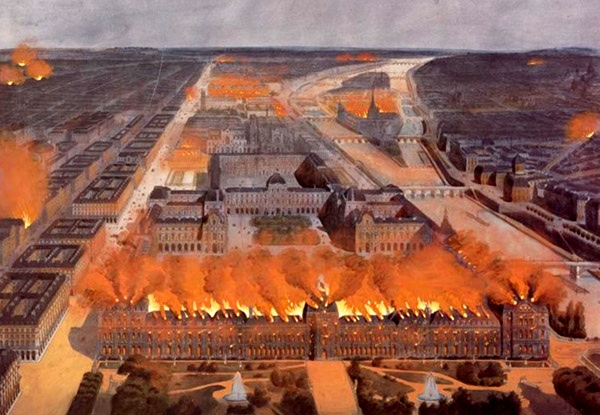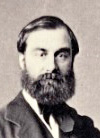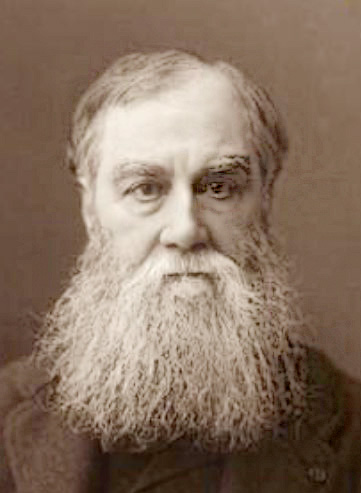Joseph-Henry Barbet de Jouy (1812 – 1896), conservator, “Savior of the Louvre”
1st image: Soirée; 2nd: by Levitsky (1865); 3nd: photo (c.1880). (Alternative: Duval)
Henry Barbet came from an industrial family from Rouen. His father ran a paper factory at the city of Jouy, and added this name to distinguish himself from his brother, who had a factory at Rouen. The name was approved in July 1859.
Henry studied law and architecture, but these did not appease him. At the age of twelve, his grandmother had given him a Chinese vase, which initiated his passion for porcelain. His father was an acquaintance of de Nieuwerkerke16, who hired Henry in 1850 as administrator. According to Viel-Castel43, Barbet was incapable to distinguish between real and fake items. He was primarily administratively involved, first reporting into de Rougé26a, later to Longpérier37, and refused to participate in buying sessions because he did not consider himself sufficiently knowledgeable.
In 1853, he became assistant conservator of antiques and modern sculpture (de Nieuwerkerke’s art). He encountered a disorganized collection and immediately started to create a catalogue. His first book: les Della Robbia, about Tuscany medieval sculpture, was positively reviewed by Viollet-le-Duc40a in January 1855. After being criticized by Viel-Castel and dismissing him from his post in March 1863, de Nieuwerkerke appointed Barbet de Jouy in his place.

Barbet’s moment of fame arrived after the vendredi-soirées were discontinued. After the French defeat in 1870 by the Prussian army, the city was in chaos. Next to the federal government, initiated in Versailles outside the besieged city, a Communal government seized power in Paris in 1871. They refused to accept the Third Republic and wanted a communist-like worker-government.
The Commune included several artists, such as Gustave Courbet. They demanded access to and work spaces in the Louvre, initially targeting de Nieuwerkerke’s luxury quarters, but settled for the former ministry of Beaux Arts when Barbet denied these.
Some artists suggested to fund the Commune by selling Louvre art works. Barbet blocked this plan as well. On May 23rd, with the federal army nearing Paris, Commune Pétroleuses set fire to multiple buildings, including the Archives and Tuileries Palace.
They demanded access to the Louvre art collection, stubbornly defended by Barbet and a dozen guards.
After a night of looting and fires, and the petroleuses threatening to burn the house where his wife and daughter lived, the federal army captured the Communards.
The Savior of the Louvre was promoted to Officer of the Legion d’honneur. A gate on the South side was named in his honor. The Revue Hebdomadaire published Barbet’s journal of these events in 1898 [p188].
Courbet was sentenced to six months inprisonment and pay millions for his share of the damage, and fled to Switzerland.
Barbet was relieved from his duties in 1881, likely caused by manipulations by conservator Alfred Arago, who was after his job. The last years of his life he spent every Autumn near Lucca, Italy, near his good friends de Nieuwerkerke and de Longpérier.
The gallant and modest Barbet de Jouy preferred a burial at Pere Lachaise cemetery without any pomp and circumstance.


